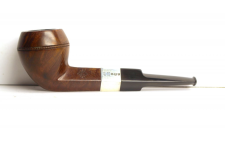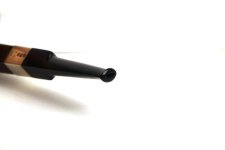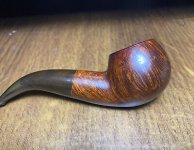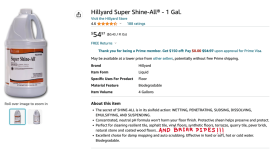Thank you for, over and over again, sharing your knowledge Jesse.It's a lot of money, on the other hand, these are two curiosities, and some collectors, like me, love that stuff. The 1880's is interesting because it's stamped "Barling's Make" which means it was totally fabricated in the Barling factory, which, if the case, would push back the earliest datable use of the stamp by about a decade. But the year stamp on the silver is unreadable, and while the cartouche shapes point toward an 1880's origin, the order of the country and city stamps is reversed from the 1880's. Just to make sure I pulled out my 1880's Barlings and the country and city hallmarks are in reverse order from this pipe. It's too bad the seller didn't show how the stem was attached to the shank, as that would have helped date the piece. If there's a friction tenon, it's not an 1880's piece. The cartouches are odd.
The real interesting piece is the side stamped sandblast. Never seen that before, but I have seen the side framing of the Barling's Make shank logo in the pre-war period. The stem shape solidly locks this pipe to the 1930's and later. So was this sidestamping of the stem logo something done for the rare pre-war sandblasts? There's no knowing until some other examples turn up. There's no other nomenclature on the pipe, according to the seller. So, unlike other pre-war Barling sandblasts, there's no "Nibblick" stamp. Again, a unique and kind of mysterious Barling pipe in unmoked condition as well. What's not to like if you're a Barling fan.
I knew this would lure you out of the woods

















